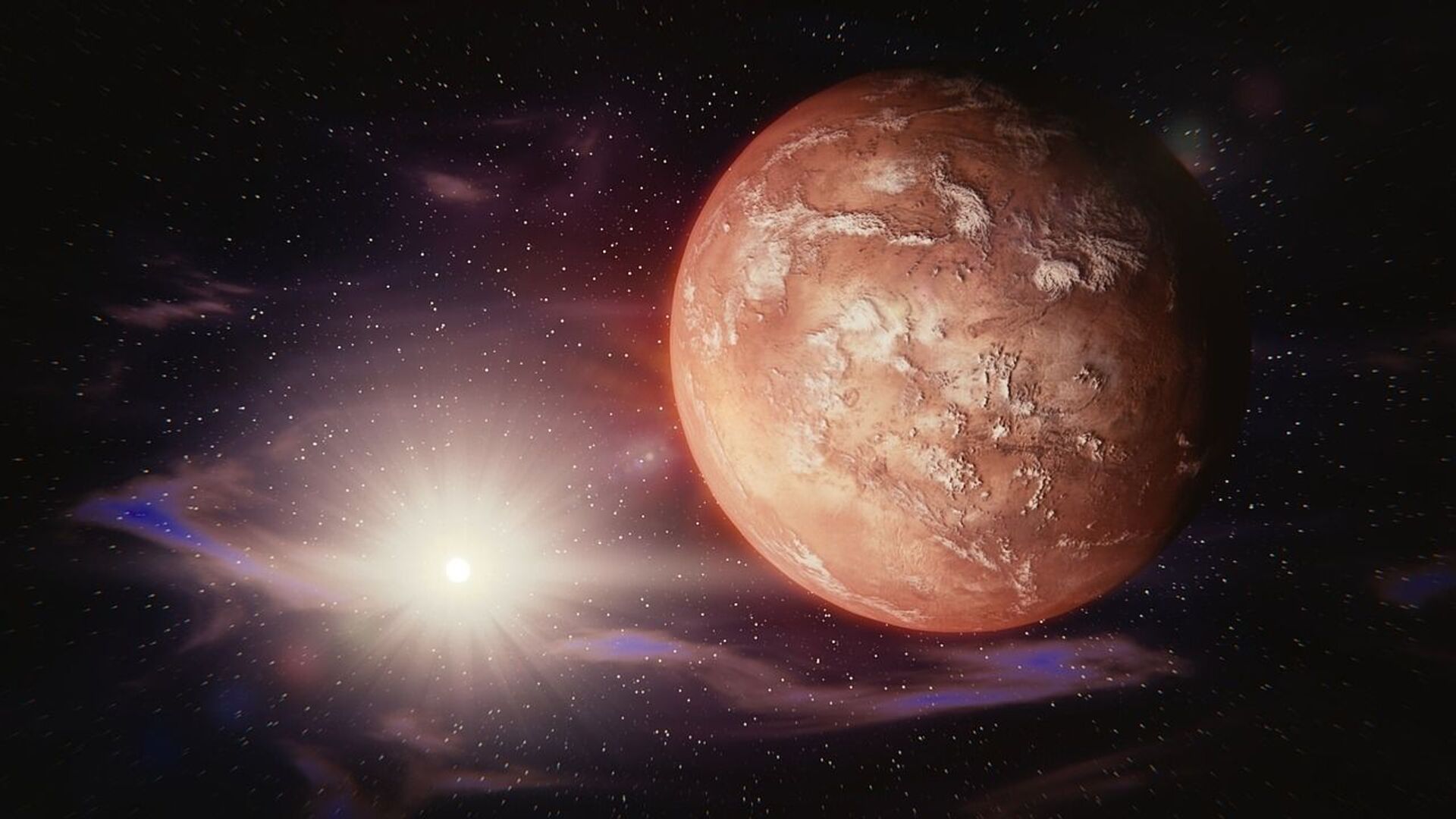Photo of Mars Shows How Dry Ice & Water 'Sculpt' Planet's Surface
18:49 GMT 26.06.2022 (Updated: 10:10 GMT 30.11.2022)

CC0 / /
Subscribe
The image apparently shows how water ice that is frozen in the Martian soil ends up splitting the ground on the Red Planet “into polygons”.
A peculiar development was spotted on the surface of Mars thanks to the High Resolution Imaging Experiment (HiRISE) camera installed aboard the NASA’s Mars Reconnaissance Orbiter.
A photo taken on 30 March this year shows a swathe of Martian soil covered with what looks like white zigzag lines with several bluish splotches between them.
Researchers at University of Arizona’s Lunar and Planetary Laboratory – research center responsible for building and operating the HiRISE – have explained in a statement that it is water ice frozen in the planet’s soil that “splits the ground into polygons”, as “both water and dry ice have a major role in sculpting Mars’ surface at high latitudes”.
HiPOD: Spring Fans and Polygons
— HiRISE: Beautiful Mars (NASA) (@HiRISE) June 20, 2022
Spring activity is visible as the layer of translucent dry ice coating the surface develops vents that allow gas to escape. The gas carries along fine particles of material from the surface further eroding the channels. https://t.co/k5QQy4P0ij pic.twitter.com/J1loOpaJsH
“Spring activity is visible as the layer of translucent dry ice coating the surface develops vents that allow gas to escape,” the research team elaborates. “The gas carries along fine particles of material from the surface further eroding the channels. The particles drop to the surface in dark fan-shaped deposits. Sometimes the dark particles sink into the dry ice, leaving bright marks where the fans were originally deposited.”
The researchers also note that “often the vent closes, then opens again, so we see two or more fans originating from the same spot but oriented in different directions as the wind changes.”
